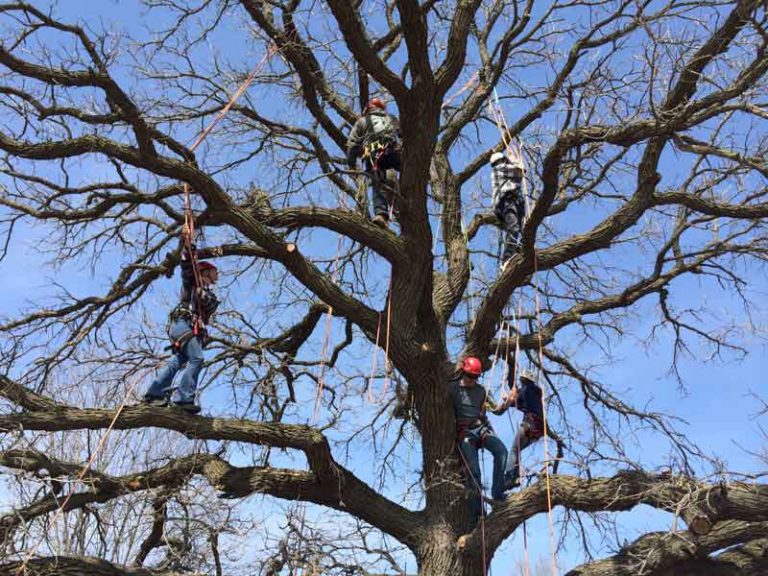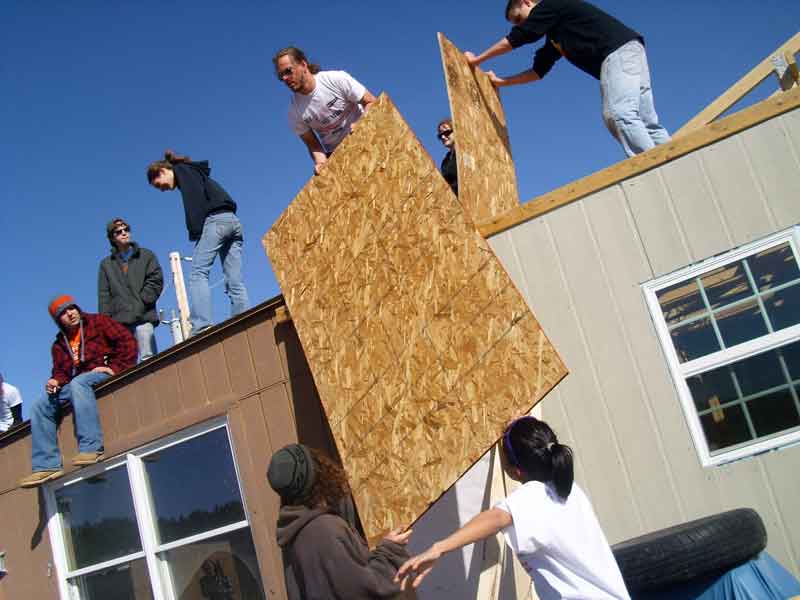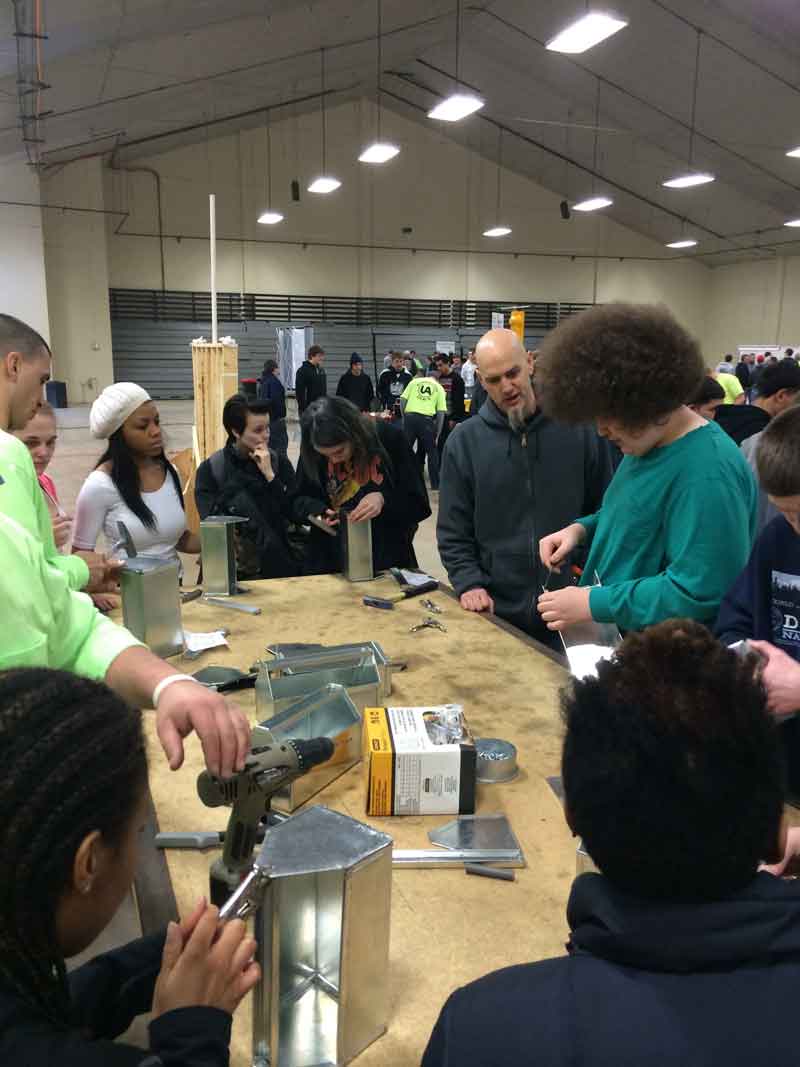
By Blue Campbell
Junior at Shabazz and East High Schools
Malcolm Shabazz City High School, on the Northeastside of Madison, is an alternative to traditional high school and is open to grades 9‒12. Many people have a very skewed idea of what Shabazz truly is, and some aren’t aware that Shabazz is even an option. I wanted to know exactly what people from varying perspectives thought about Shabazz. To find out, I asked current Shabazz students, alumni and staff, students at other high schools, parents of Shabazz students, and other community members to tell me the first word that came to mind when they thought about Shabazz.
Current Shabazz students used words like “acceptance,” “support,” “challenging” and “safe.” Shabazz alumni said “misunderstood,” “community,” “family” and “success.” Students from other high schools used words such as “alternative,” “casual” and “stoners.” Parents of Shabazz students called Shabazz “necessary” and “creative.” Shabazz staff described it as “transformative.” Community members called it “free-thinking” and “different.”
As you can see, different people have vastly different ideas of what Shabazz is about. This is largely because most people have never visited Shabazz, if they are even aware that it exists. Due to this, there is a lot of stigma surrounding Shabazz and its students.

When individuals have negative or warped perceptions of Shabazz, we are likely to lose the funding we need in order to continue supporting all of our students. Additionally, students who are currently struggling in a traditional school environment are less likely to consider applying to Shabazz, which can drastically impact their chance at graduation, college and a career. My goal is to give a more realistic and accurate depiction of Shabazz, why it exists, and the benefits of an alternative school.
First and foremost, teachers at Shabazz are committed to offering authentic intellectual work, which can include service learning and experiential learning. Service learning is a practice in which students learn about a genuine need within their community and then do service projects to help remedy that need. Service learning is different from community service because the service is integrated with academic skills and content. Shabazz is fantastic at this. In fact, Shabazz was named a Service Learning Leader School in 1999 and has been a National Demonstration Site for Service Learning since 1995.
Experiential learning occurs when students learn in and from a real-world environment. All service learning is experiential, but not all experiential learning is service learning. Some examples of recent authentic intellectual work at Shabazz include building and repairing homes in Pine Ridge, South Dakota; repairing and updating computers before distributing them free to community members; writing and illustrating books for children to promote literacy at nearby elementary schools; working to reduce invasive plants while planting native species with environmental partners such as the Friends of Lake View Park and Dane County Parks; performing a play that students have collaboratively written and designed; and designing and organizing team building activities for new students, to name just a few.
The effects of authentic intellectual work are incredible. Shabazz scored in the top 25 percent in the country on engagement on the 2014 Gallup Student Survey. Furthermore, 97 percent of students believed that they have opportunities to do what they do best every day, and 95 percent of students believed that Shabazz is committed to building their strengths. This is largely due to the fact that teachers and students at Shabazz are encouraged to form strong, personal relationships. We are able to do this in part because class sizes are very small — most classes cap enrollment at 16 students.
Class subjects and structure are also different from what you might find at other high schools. Classes at Shabazz are discussion based, teachers listen to their students as much as students listen to their teachers, support and respect are built into the curriculum and culture, and students at Shabazz learn how to think for themselves and share their ideas with others. Shabazz, just like every other high school, offers math, science, social studies and English classes, and the credits one can earn in those classes are worth the same as at other high schools.
The difference at Shabazz is the way in which these subjects may be taught. For example, in your sophomore year at East, West, La Follette or Memorial, you might take English 10 or English 10 Honors for English credit. At Shabazz, you might take Writing Stories for Children, Controversial Drama, Intro to Writing at Shabazz, Film Analysis, Reader’s Workshop, or any number of interesting and personalized classes. These types of classes at other schools are often regarded as electives or easy A’s. However, credits at Shabazz are not given out for free; students must earn the credits, as is true at every high school. The difference at Shabazz is that teachers make earning credits accessible to all students, not just a privileged few.
Staff works continuously to ensure that students are on a level playing field, so that they all have an equal chance at graduation. Thanks to this, 95 percent of our seniors graduate on time and 80 percent go to college immediately after. This is compared to a graduation rate of 78.8 percent at East, 87.3 percent at West, 82.8 percent at La Follette, and 86.6 percent at Memorial, according to each school’s state report card from the 2013-14 school year.
However, the biggest draw for most Shabazz students is the sense of community and

safety at Shabazz. On the 2014 Gallup Student Survey, 98 percent of students agreed or strongly agreed that they felt safe at Shabazz. This is largely due to the fact that Shabazz has a strong anti-bullying and anti-harassment culture, as well as strict policies to support this culture. Harassment in any form (verbal, physical, sexual, online, etc.) is not tolerated.
Conflicts at Shabazz are resolved using Restorative Justice. Restorative Justice is a system built on the principles of mutual respect, growth and healing, versus the standard approach of using punishment as a reaction to an offense. If a student is repeatedly making Shabazz an unsafe environment for learning, teaching, working or sharing ideas, they are likely to lose their placement at Shabazz.
Additionally, Shabazz has a strict AOD (Alcohol or Other Drugs) policy. The use of drugs on school grounds is strictly prohibited, as is the glorification of drugs or drug use through clothing, accessories, images or speech. This policy is in place because some students choose to leave their home schools to escape the pro-drug culture or to recover from addiction.
These policies work because students at Shabazz want to be here. They must apply, interview and attend a shadow day. Only students who truly want to be at Shabazz will be accepted, and all those who have been accepted value their spot within the school and within the community. Furthermore, Shabazz students helped create the previously mentioned policies, so very few students choose not to live by these rules, and even fewer lose their placement because of it.
Students come to Shabazz for a host of different reasons. No reason is better than any other. Students are recognized and accepted for who they are and where they are in their education, and are then helped to grow. Those who choose to attend Shabazz improve in attendance, reconnect to a love for learning, and become more engaged in their education, their lives and their paths toward the future. They graduate with a regular high school diploma and set out into the community as responsible, smart and self-aware individuals who work to better themselves and their communities.
To learn more about Shabazz or the application process, please visit our website at www.shabazz.madison.k12.wi.us or email them to shabazz@madison.k12.wi.us.